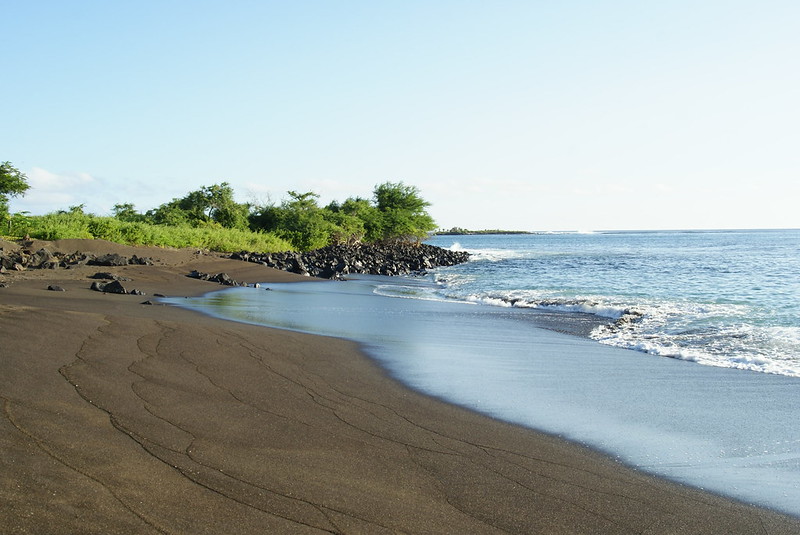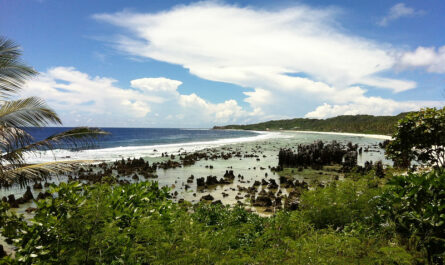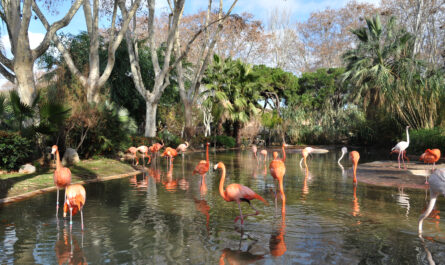The Galápagos Islands, a remote archipelago situated in the Pacific Ocean about 1,000 kilometers off the coast of Ecuador, is one of the world’s most iconic natural treasures. Known as the birthplace of Charles Darwin’s revolutionary theory of evolution, these islands are home to a dazzling array of flora and fauna, many of which are found nowhere else on Earth.
In this extensive article, we will explore the unique ecosystems of the Galápagos Islands, delve into the incredible diversity of life that calls these islands home, and discuss the conservation efforts aimed at preserving this ecological wonder for future generations.
1. Geographic and Ecological Overview of the Galápagos
A Volcanic Origin
The Galápagos Islands were formed millions of years ago through volcanic activity. Their isolated location and the convergence of ocean currents have created unique ecosystems that support a wide range of life forms. The archipelago consists of 13 major islands, 6 smaller islands, and over 100 islets and rocks, each with its distinct environment.
A Meeting Point of Currents
Three major ocean currents—the Humboldt, Cromwell, and Panama currents—converge around the Galápagos. These currents bring nutrient-rich waters that sustain a vibrant marine ecosystem, making the islands a hotspot for marine biodiversity.
2. Iconic Species of the Galápagos
Giant Tortoises
The Galápagos giant tortoise is perhaps the most famous resident of the islands. These gentle giants can live for more than 100 years and weigh up to 400 kilograms. Each island boasts its own subspecies, adapted to its specific environment.
Marine Iguanas
Unique to the Galápagos, marine iguanas are the only lizards in the world that have adapted to live and forage in the sea. These remarkable reptiles feed on algae and can hold their breath underwater for up to 30 minutes.
Blue-Footed Boobies
The blue-footed booby is a quirky and endearing bird known for its strikingly bright blue feet. Their unique courtship dance, involving exaggerated foot-raising, is a spectacle that attracts wildlife enthusiasts.
Flightless Cormorants
Among the most peculiar birds on the islands is the flightless cormorant, which has lost its ability to fly over centuries of evolution. Instead, it has adapted to life in the water, using its powerful legs to dive for fish.
Galápagos Penguins
The Galápagos penguin is the only species of penguin to live north of the equator. Despite their tropical surroundings, these birds thrive thanks to the cool waters brought by the Humboldt Current.
3. Marine Biodiversity
The waters surrounding the Galápagos Islands are teeming with marine life, making them a paradise for divers and snorkelers.
Coral Reefs and Sea Life
- Sharks and Rays: The Galápagos is home to species like hammerhead sharks, reef sharks, and manta rays.
- Sea Lions: These playful marine mammals are a favorite among visitors, often seen lounging on beaches or swimming alongside snorkelers.
- Whale Sharks: The largest fish in the ocean, whale sharks are regular visitors to the islands, especially near Wolf and Darwin islands.
Underwater Volcanoes and Deep-Sea Ecosystems
The Galápagos’ underwater landscape includes submerged volcanic mountains that host unique deep-sea creatures, many of which are yet to be discovered.
4. Plant Life of the Galápagos
While the Galápagos Islands are best known for their wildlife, their plant life is equally fascinating.
Cactus Forests
Species like the prickly pear cactus dominate many of the islands. These plants have evolved to withstand arid conditions, providing both food and habitat for native animals.
Scalesia Forests
Often referred to as the “Darwin’s finches of the plant world,” Scalesia trees have adapted to various microclimates across the islands, forming lush forests in higher elevations.
Mangroves
Mangrove forests thrive along the shores of the Galápagos, serving as vital nurseries for marine life.
5. The Role of the Galápagos in Darwin’s Theory of Evolution
A Laboratory of Evolution
When Charles Darwin visited the Galápagos in 1835, he observed variations in species from island to island. These observations were key to developing his theory of natural selection.
Darwin’s Finches
The finches of the Galápagos are a classic example of adaptive radiation. Each species has a unique beak shape, adapted to specific feeding habits and environments.
6. Conservation Challenges
Invasive Species
Non-native animals and plants, introduced by humans, pose a significant threat to the Galápagos ecosystem. Goats, rats, and invasive plant species like quinine trees have disrupted native habitats.
Climate Change
Rising ocean temperatures and changes in current patterns threaten the delicate balance of life in the Galápagos. Coral bleaching and disruptions to the food chain are among the most pressing concerns.
Tourism and Human Impact
While tourism brings vital revenue, it also puts pressure on the islands’ resources. Strict regulations are in place to minimize human impact, but managing growing visitor numbers remains a challenge.
7. Conservation Efforts and Sustainable Practices
The Galápagos National Park
Established in 1959, the Galápagos National Park protects 97% of the land area. It works closely with conservation organizations to restore habitats and combat invasive species.
Marine Reserve
The Galápagos Marine Reserve, one of the largest in the world, safeguards the islands’ waters and their incredible marine biodiversity.
Scientific Research
Organizations like the Charles Darwin Foundation conduct vital research and restoration projects, including captive breeding programs for endangered species like the giant tortoise.
8. Exploring the Galápagos Islands as a Visitor
Eco-Tourism
Sustainable tourism is at the heart of the Galápagos experience. Visitors are encouraged to explore the islands responsibly, with guided tours ensuring minimal environmental impact.
Top Activities
- Snorkeling and Diving: Explore vibrant coral reefs and swim with marine creatures.
- Hiking: Discover volcanic landscapes and breathtaking vistas.
- Wildlife Watching: Get up close to iconic species like sea lions, tortoises, and finches.
9. The Future of the Galápagos
Balancing Conservation and Development
The Galápagos faces the challenge of balancing the needs of its growing human population with the imperative to protect its natural heritage. Renewable energy projects and stricter conservation policies are part of this effort.
Community Involvement
Local communities play a crucial role in conservation efforts, from managing sustainable fisheries to participating in education programs.
Conclusion: A Legacy Worth Preserving
The Galápagos Islands are not just a natural wonder; they are a symbol of the intricate connections between life and environment. Their unique ecosystems and the lessons they offer about evolution and sustainability make them a treasure worth protecting. As global challenges like climate change loom large, the story of the Galápagos reminds us of the importance of stewardship and the enduring value of our planet’s biodiversity.



